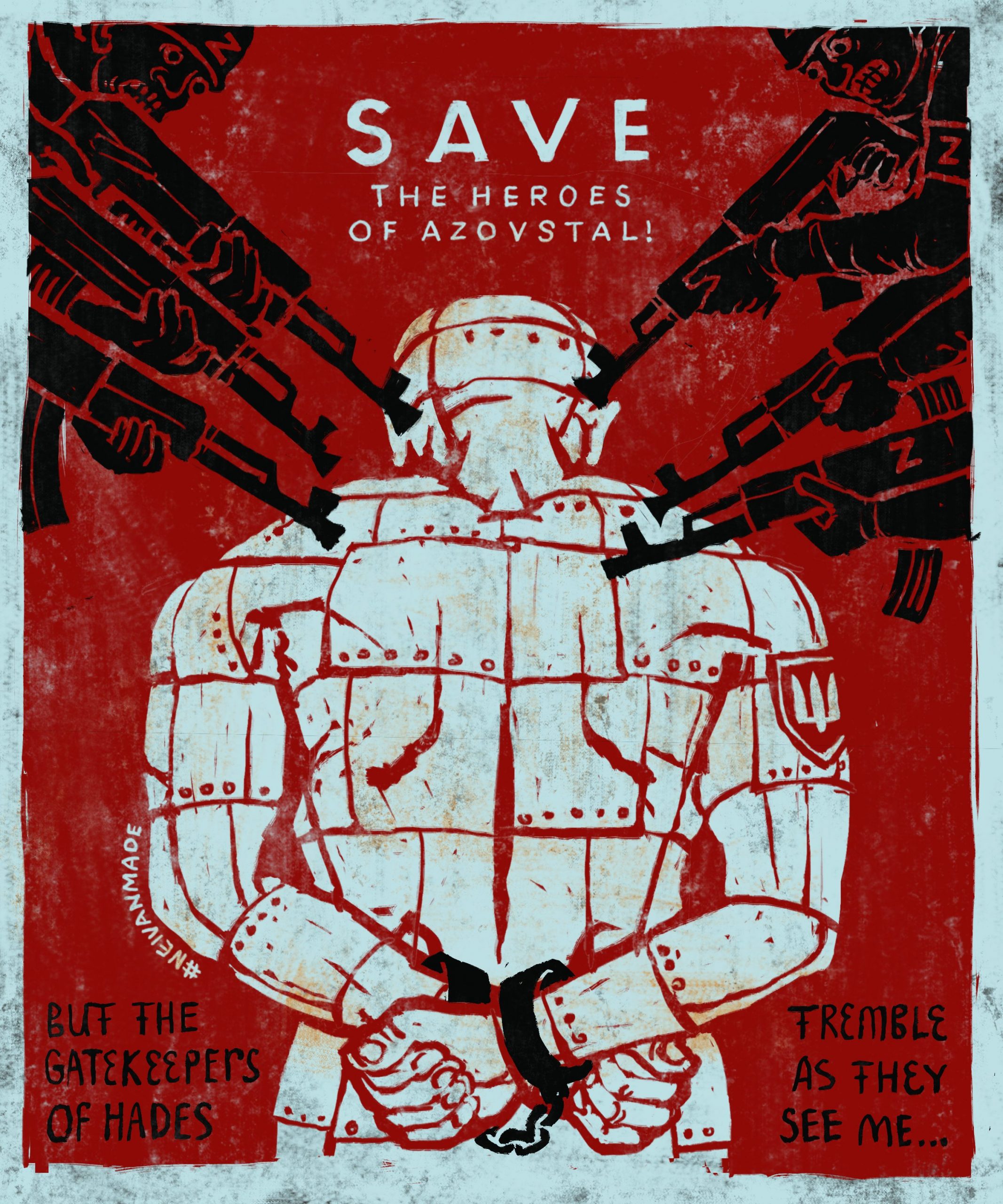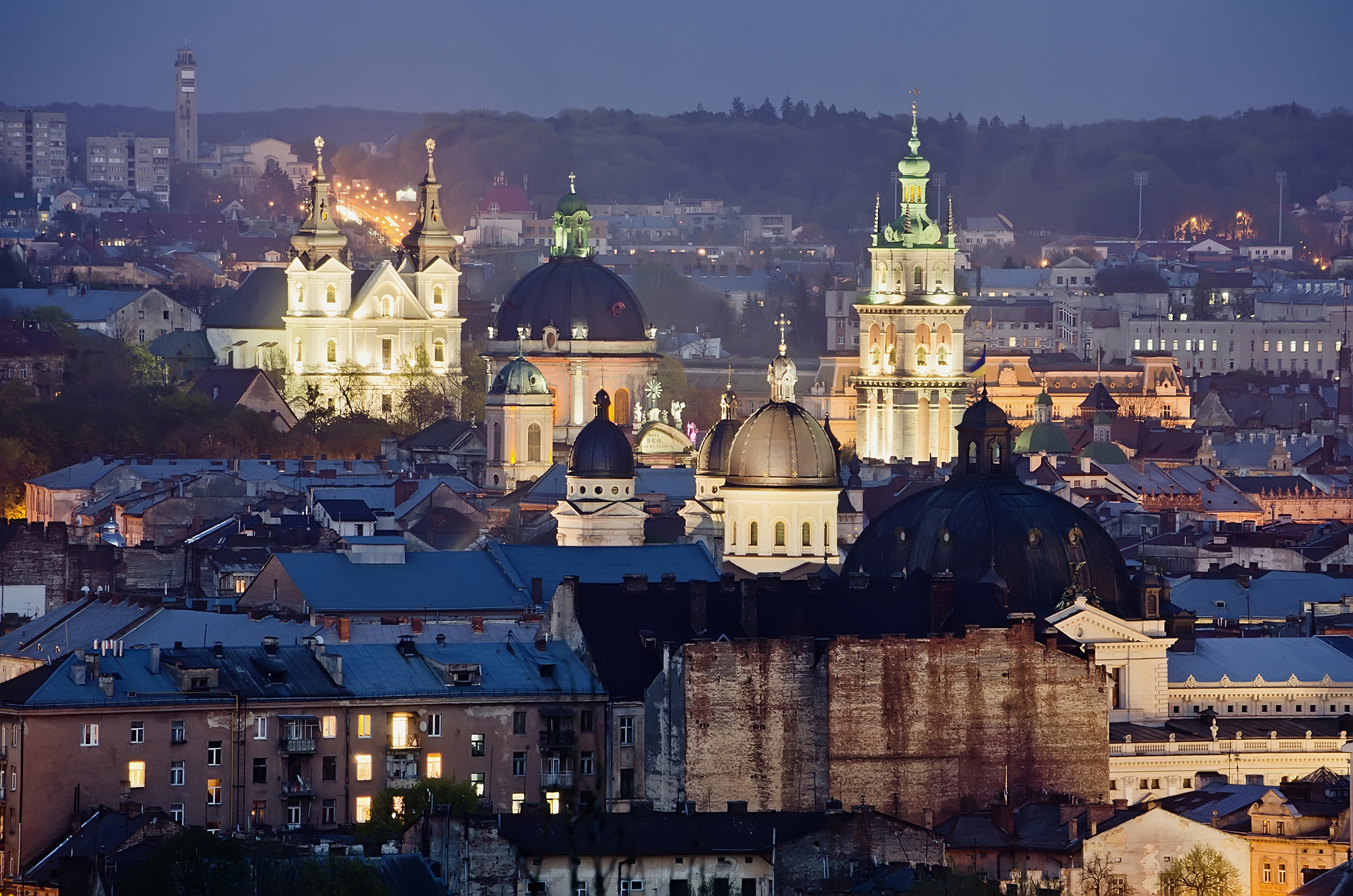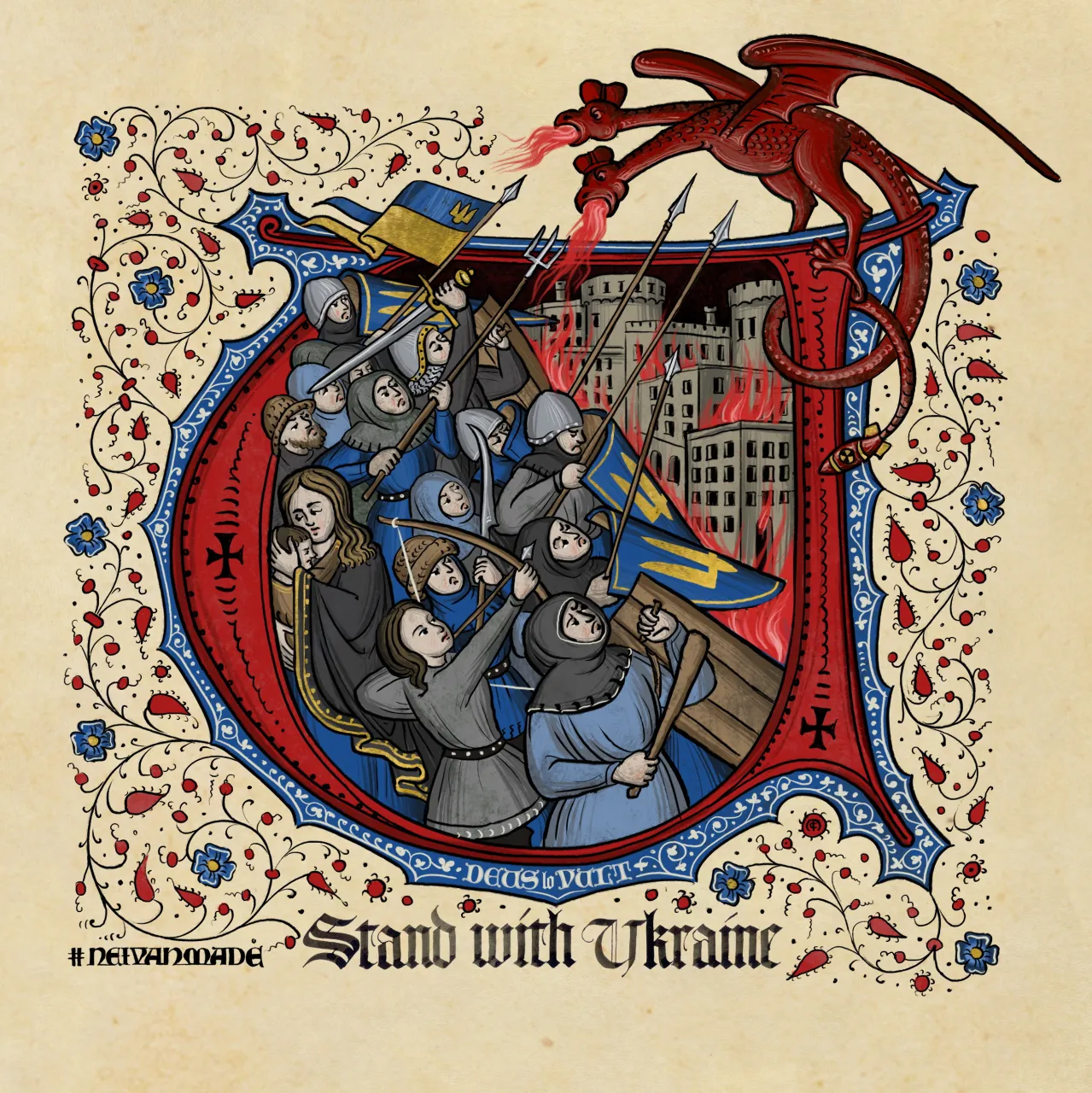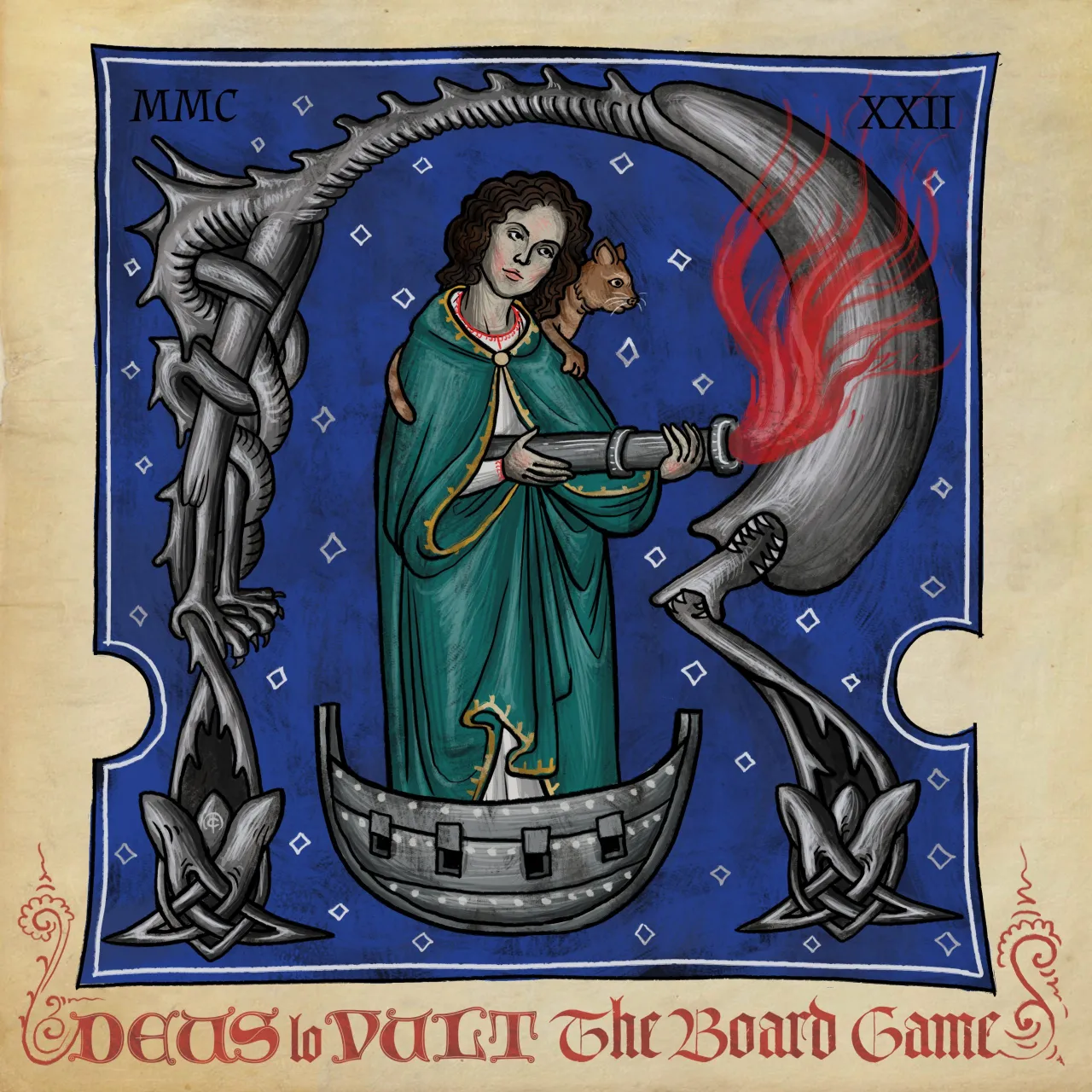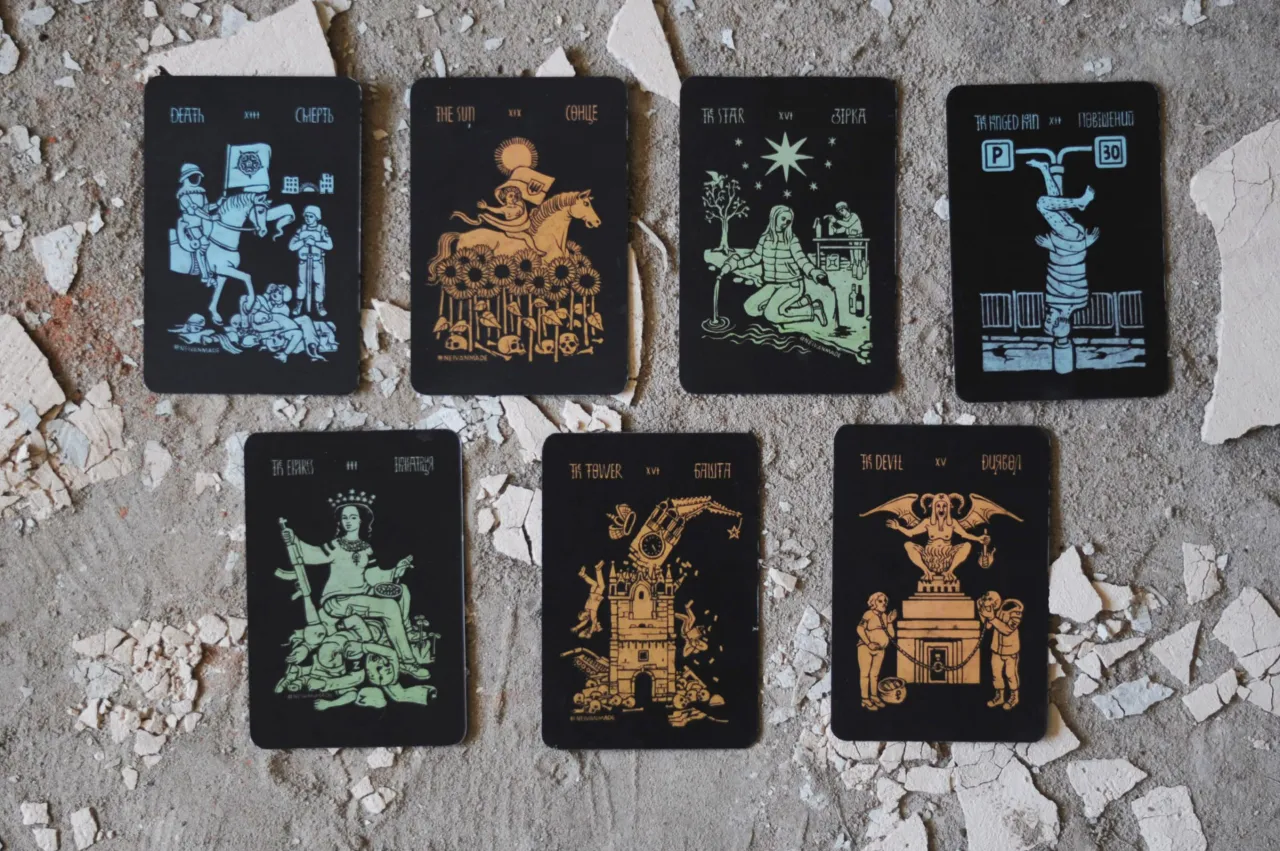Lviv-Based Artist Mykhailo Skop on Board Game Design, Medieval Art, and Wartime Posters
Since many creatives constantly keep an eye on their colleagues and the art field, sometimes, it might feel like you’re already familiar with all kinds of approaches and visions. This is until you meet Lviv-based artist Mykhailo Skop, who is fond of the Middle Ages and works as an art director at a board game production company.
Mykhailo’s take on art is truly unique. For him, creativity is all about collecting signs and creating new meanings. He does not believe in inspiration, but in triggers that help him better translate his ideas to others. Mykhailo is also one of the artists who joined The Revival Project to create a series of charity NFTs to support Ukraine.
Already intrigued? Get comfortable and dive into the interview with Mykhailo Skop.
On creativity as a process of collecting signs
Creativity is communication, and each project I work on resembles a sign collection. I believe the whole world is a collection of myriads and signs. The artist’s job is to find these connections and combine specific images with others so that new meanings appear.
Every time this happens, I get a sense of excitement. And the most important thing is that other people get it too. In my case, the principle “I am an artist, and this is how I see” does not work. I believe that an artist should speak to people. This does not mean that you have to be obvious. You can say something that is not entirely understandable to everyone, but it sticks because certain visual codes are triggered. Finding this trigger is one of my main tasks.
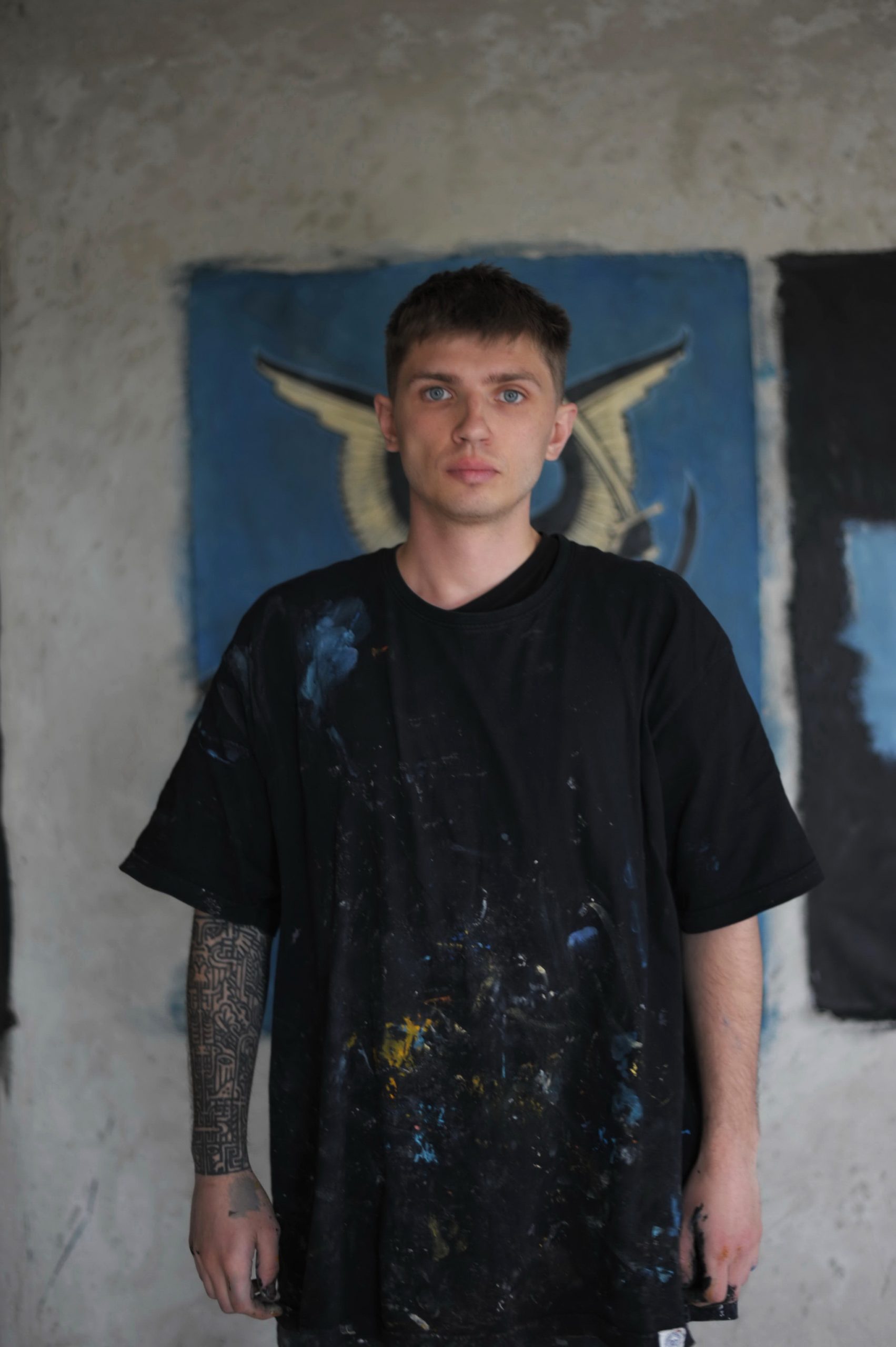
On childhood and sacred fatalism
My childhood consisted of the Middle Ages, art studies, traditions, and Ukrainian history, because my parents, Lev Skop and Halyna Druzyuk, are art historians and restorers. It has greatly influenced my becoming and choice of profession. Since childhood, I had a feeling of sacred fatalism, which was shaped naturally because we, Ukrainians, encounter incredibly epic events (mighty deeds of heroes or terrible tricks of thieves) from time to time. But these notes of fatalism testify to globality, not doom. We can understand and feel something deep, meditative that doesn’t need to be explained – something on the tip of the tongue.
On Lviv and its cultural heritage
Lviv is a city on the verge of golden autumn and winter; a city of ancient streets, cobblestones, and endless courtyards. Where everything is hung with linen, and people, who have walked the carved stairs for generations, sit on their balconies and drink coffee every morning. These are local things that tourists will never see; Lviv is all about its ambience.
When it comes to architectural landmarks, I believe an individual building cannot have a holistic meaning because everything is better perceived in context. I cannot abstractly look at the Dominican Church or the Cathedral Basilica of the Assumption, because all sites together form a single ensemble. I like old things. I like Gothic, Renaissance, and 17th century remnants. Sometimes, it’s nice to go down to an old cellar or bomb shelter, look at the Gothic arches, and be happy about that. I like to explore artifacts that show globality. The beauty of the city in its different layers.
Also, Lviv is a border city with a lot of influences. Now, it is in a certain cultural vacuum of traditionality and settledness, although the city has always been a trade center, with different peoples of various religions living here. All this has intertwined over the years and shaped what the city is today.
On the brightest childhood memories
As a child, my parents and I had a tradition of going to churches every Christmas, strolling the city center, looking at shops, little angels, and festive decorations at churches. At that time, the city was perceived differently, as if it was a huge fairytale, unrecognizable at any other time of the year.
I also have a lot of memories of museums because my mother and father constantly worked with ancient art. I sat and looked at things that no one could see. I remember the stock vaults, which were incomprehensible. The place stored many treasures, but was mostly closed to other people.
Of course, you could go to the town hall, the Kornyakt Tower, but it was always more enjoyable for me to explore basements and stairwells, and dive into hidden areas of the building. For example, I remember how my mother inspected the base of the tower of the Jesuit Church, where traces of the 1874 fire were visible. From the outside, everything seems new and repaired, but inside there are traces of soot. Just imagine that 148 years have already passed!
On medieval art and its perception today
Sacred art should be super-expressive and super-intelligible, communicating a great mystery at the same time. Therefore, it speaks with obvious and often banal messages. But all this depends entirely on relevance, that is, on whether people can connect a certain image to their reality. For example, a medieval miniature. A modern person will most likely not be able to understand its meaning, because it contains visual codes that worked then and can only be read by specialists now. Each era has its codes, so I am not a supporter of imitating ancient sacred art, as if it were somehow better, but I still use its principles in artistic practice.
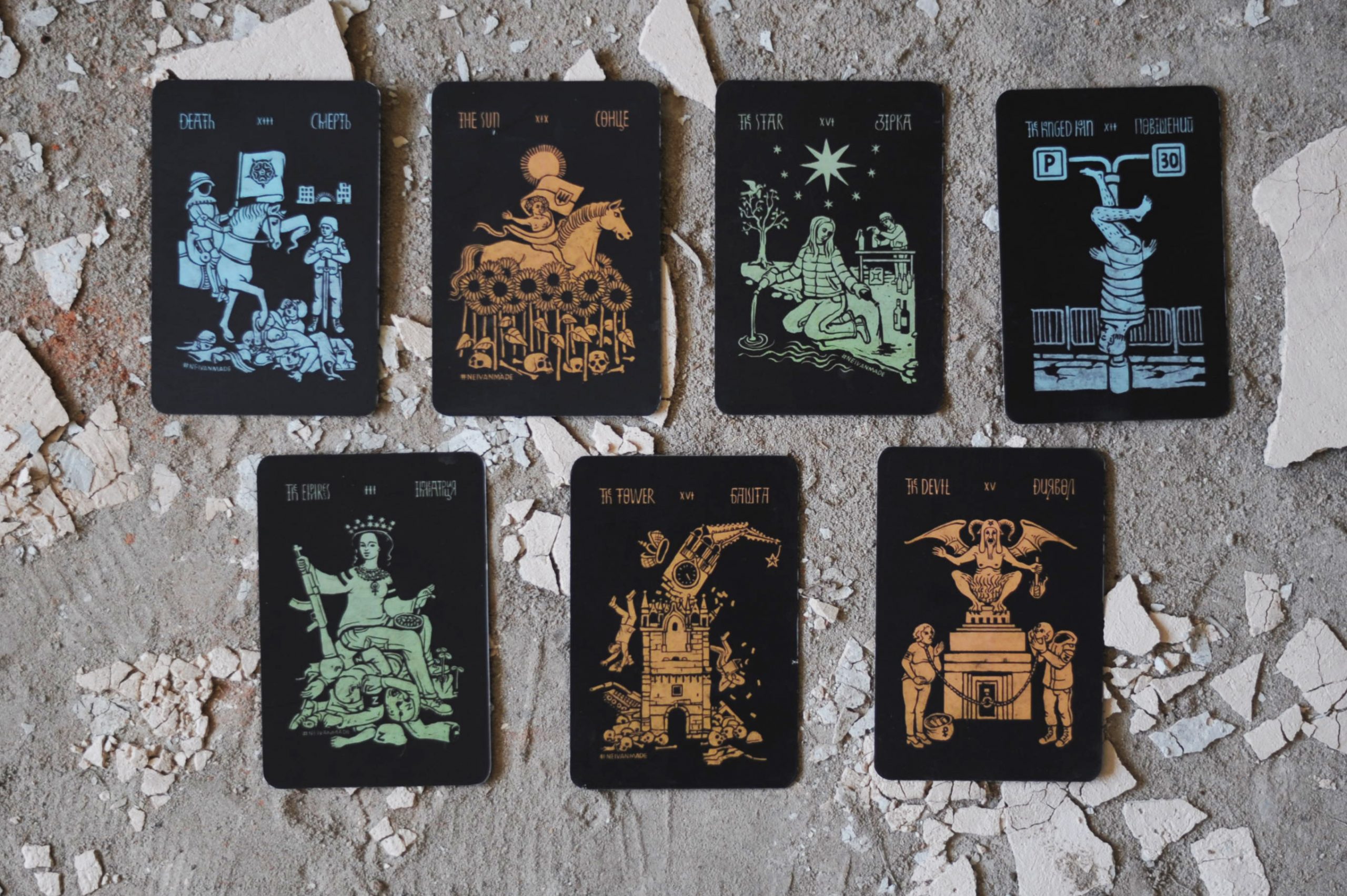
On working as an art director at Hiatus Game
In addition to my research work, I am an art director at Hiatus Games, specializing in board game production. I am engaged in artistic trends, namely the imitation of historical styles. I’m not interested in creating universal digital art. I am approached when a reproduction of a medieval codex is needed, as it was for the game Deus lo Vult, as well as a cycle of “medievalized” memes. In the same way, I created a series of drawings that imitate the miniatures of Radziwiłł. Just before the full-scale russian invasion, I worked on the Local History “Lifestyle. Ancient Cities” project on how ancient Kyivans lived. A series of illustrations combined the realities of a modern Kyivan with the style of the 15th-century Radziwiłł Chronicle in the appropriate perspective and artistic manner. I love projects like this!
One of my favorite questions as an artist is: “How did you do that?”. For me, a person mustn’t in any way think that it was created digitally. When something is copied or imitated, in whatever form it is done, it is crucial to repeat the steps that the particular artist took. Working on a computer, you can quickly redraw everything pixel by pixel, but that’s not interesting. I repeat the original technical process. If we’re talking about a medieval miniature, I first make a black drawing, then fill it with basic colors, shades, and so on.
You should copy a lot to learn. There are tons of images on the internet, enough to select and copy as many times as necessary. For instance, if you redraw a medieval miniature ten times, the next time, your hand will automatically be able to draw the exact face you want to see.
On inspiration and art during the war
I don’t know what inspiration is; my work is based on triggers. If I am impressed by an event, I quickly start collecting signs to share this emotion with people. However, there is one more thing. Art exists for art’s sake; it’s about culture and perception. That is, when we place signs and create context, it allows us to see a pressing social or other issue through a subjective perspective. It is about us, not about practical application. When art becomes applied, it ceases to be art. It can be an illustration, it can be artistic decoration, but not art as such.
In wartime, we see a lot of poster art, the purpose of which is to communicate one’s vision clearly and highlight events. There is a practical purpose here, and it dictates a lot.
Such art is needed now. It is, in fact, a reaction. And reflection, which cannot be straightforward and unequivocal, is a basis for pure art. But this is currently almost impossible, because it appears when there is a physical and emotional distance. For example, it is now easy to reflect on the Second World War because it is not happening now: we look at events and construct contexts. However, during the war in Ukraine, we are part of this system and cannot perceive it abstractly.
To support Ukraine in our struggle, I created many posters. They aim to speak to people from different continents in a visual language, so that Ukraine is not forgotten and we do not lose our advantage on the information battlefield. In posters, I depict the realities of our struggle, applying the basic principles of iconography and imitation of folk woodcuts. I create my works in cycles, with one of the most important ones being Mariupol-Azov. In these works, I reflected on the struggle of the city, as well as the further fate of our heroes who are being held captive by russian invaders. I also love working with tarot cards. That’s why I created the “Arcana Belli” card cycle. I combine Pamela Smith’s classic Ryder-Waite deck layout with modern war imagery. This deck is scheduled for release in late 2022.
